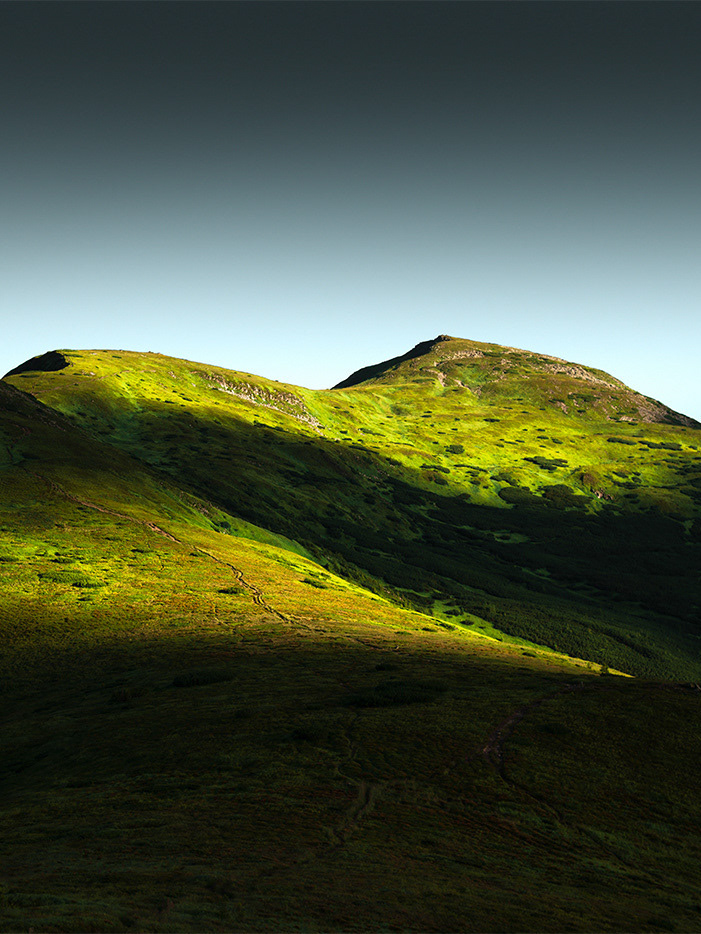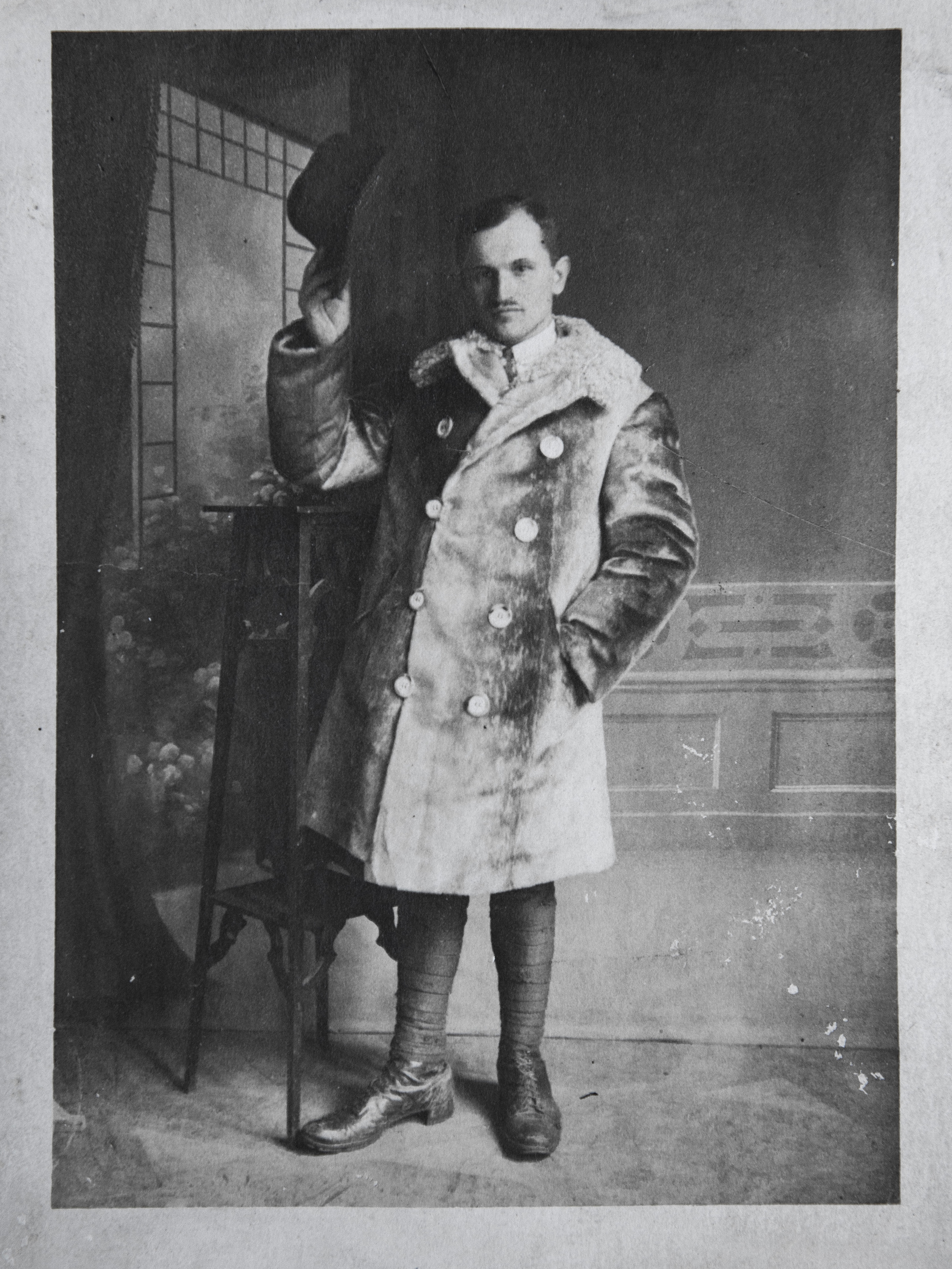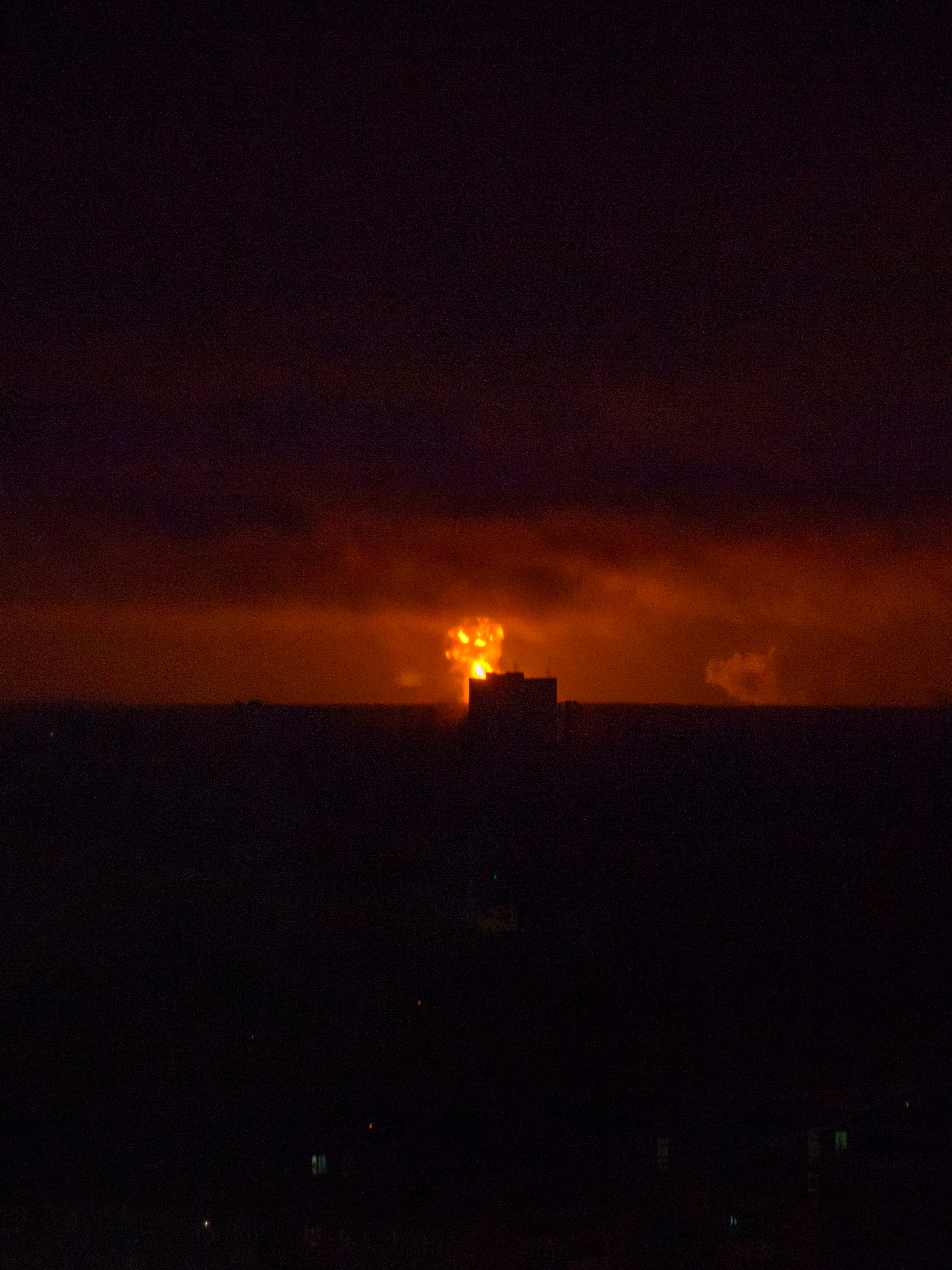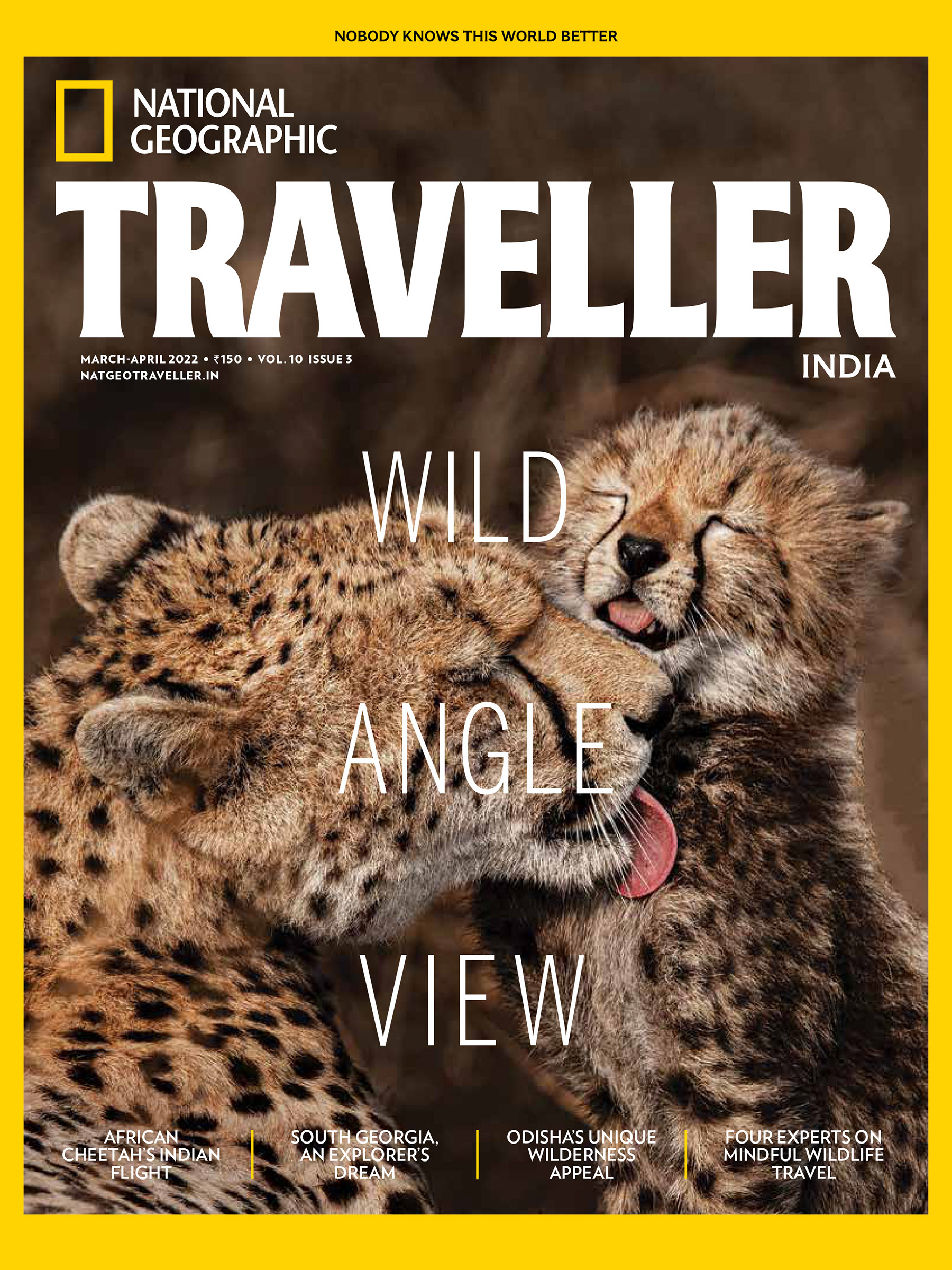NATIONAL GEOGRAPHIC TRAVELLER SEPTEMBER-OCTOBER 2021
"The Bear Truth"
Ukraine’s Bear Sanctuary Domazhyr is a haven for rescue wildlife, and an eco-educational centre for visitors.
Text & Photos by Artur Abramiv
National Geographic Traveller commissioned me to create a story about a rehabilitation center for brown bears for a print edition. The project highlights animal rights and the need for their protection. The personal stories of each bear shed light on the serious issue of abuse of wild animals in Ukraine and how an animal welfare organization in the country rescues brown bears from cruel owners. After the bears are rescued, measures are taken to rehabilitate the traumatized animals. At the sanctuary, each bear is closely monitored during the adaptation period, during which they undergo a thorough medical check-up. Data is analyzed to determine the extent of psychological trauma, a diagnosis is made, and the specific rehabilitation approach needed for each bear is determined. Due to small cages and restrictions on movement, musculoskeletal problems, decayed teeth, and visual impairments are notably common. During the first months, they are placed in adaptation enclosures. If the adaptation is successful, the bear is moved to a 2-hectare forest enclosure, where it lives alone in an environment as close to nature as possible. In such conditions, the revival of basic instinctive mechanisms is observed, and many bears achieve a certain degree of happiness. Unfortunately, some bears will not be able to adapt due to the depth of their trauma, and all the bears are so traumatized that they will never be able to live in the wild.
Music © Geoff Zanelli
Ukraine’s Bear Sanctuary Domazhyr is no run-of-the-mill animal shelter. Its inhabitants are 28 brown bears rescued from human-inflicted aggression, courtesy of FOUR PAWS—an Austrian welfare organisation that founded the establishment in 2016. Today, the 20-hectare reserve—ensconced in the village of Zhornyska, near the city of Lviv—acts as a rehabilitation centre for the bears, while doubling as an eco-educational arena for visitors.
“In January 2017, a memorandum for bear protection was signed between the Ministry of Ecology and Natural Resources of Ukraine, the State Environmental Inspectorate, and FOUR PAWS,” informs Olya Fedoriv, manager of Bear Sanctuary Domazhyr. The impact was felt in December 2020, when permissions to establish regional centres for rescue and rehabilitation of wild animals were sanctioned. Furthermore, the non-profit and the sanctuary have been purveyors of drafting and supporting bills that criminalise the exploitation of wild animals in circuses. In addition, a ban on holding bears captive in catering establishments, hotels, and recreational centres has been imposed nationwide.
At the sanctuary, each bear is closely monitored during the adaptation period, during which they undergo a thorough medical check-up and are nursed to full health once they are brought in. Artur Abramiv, a Ukraine-based photographer, visited the bear hub and documented the caretaking procedure.
Sisters Dasha and Lelya tussle over fruit. Prior to living at the sanctuary, they were held in a cage as objects of tourist attraction outside a restaurant in the city Skole, Lviv region. When the restaurant shuttered in 2019, the 16-year-olds were taken under the wings of Bear Sanctuary.
A local guide helms an educational tour for school children, where they are acquainted with the bears’ habitat and eating patterns, without coming in direct contact with the mammals.
Zoya is a 22-year-old brown bear. She was rescued in 2015. Before that, she lived in a tiny cage. She was only allowed out to perform in circus shows. That is when Zoya lost most of her sight (70%). She was blinded by searchlights. This is done to make the animal easier to control. She lives constantly in an adaptation enclosure because due to health and vision problems, she will not be able to navigate in large aviaries.
Onlookers can read biographies of the bears engraved on plates and oversee the four adaptive enclosures, each one hectare in size, from the vantage point of a fenced balcony. Masha emerges from a bear box, where she has been residing for a year.
Captive bears do not have the instinct to dig their lairs. Therefore, caretakers are building artificial dens for bears. However, some bears will regain some of their instincts due to proper care and rehabilitation.
Mykhailo is a 13-year-old brown bear, who has lived in the sanctuary since October 2020. Mykhailo was kept as a tourist attraction in a recreation center in Ukraine. While still a bear cub and weaned from his mother at a young age, he got to the recreation center. Bear lived in a small cage near car parking and the constant presence of visitors of this complex. According to the owner, Mykhailo fell from a tree in his enclosure and was seriously injured. The injuries remained untreated for several days. He was unable to walk on his hind leg and dragged it behind him, resulting in further injuries on his paws. He is limping due to the injury today. This bear is a vegetarian and does not eat meat.
Laska is a brown bear who is approximately nine years old. She arrived at a bear sanctuary in February 2019. Laska lived for years in unacceptable conditions in the run-down Pokrovsk Zoo near the town of Donetsk. Previously she was kept as a baiting bear and abused to train hunting dogs. Now she has revived natural instincts, such as digging a den.
Frankie and Anya play in an adaptive enclosure despite the downpour. Born in Cherkasy Zoo in 2014, Frankie is believed to have been later used in circus performances. He was then moved to Pokrovsk Zoo, where the living conditions were so grim that he, along with Anya, was soon rescued by the sanctuary authorities.
Caretaker Oleksandr (28) holds a box of redfish for bears. Each bucket is signed with the bear's name. Experienced animal carers look after bears every day, giving attention to their individual needs and diet. They are supported by veterinarians specialized in wildlife medicine and who conduct regular medical checks. This comprehensive care helps the bears to recover as much as possible from health conditions and the behavioral stereotypes related to their former confinement.
The diet of brown bears is balanced and resembles their natural food as closely as possible. In addition to the vegetables, fruit, eggs, fish, and meat they receive on a daily basis, bears feed a lot on the grass and other plants growing inside their enclosures in spring and summer. In autumn, their diet adapts to include more calories—needed for the bears to build up fat reserves for their winter sleep—by adding more nuts, berries, fish, and meat.
Supervisors are preparing an electric car for feeding the bears. They use this transport to quickly move between the bear enclosures.
The large enclosures provide the animals with a near-natural environment suited to the needs of their species, allowing them to wander freely and withdraw from other bears and human visitors. The enclosures have ponds that are big and deep enough for the bears to fully immerse themselves, bathe, and play.
Roman (45), a veterinarian at the sanctuary hide food in enclosures because the bear in nature is a search engine, this helps the bears gradually regain their instincts.
Animal carers distribute and hide pieces of food inside the enclosures, and constantly develop new techniques to keep bears occupied. The intelligence and skills of bears are challenged through various feeding enrichment methods, such as the use of objects filled with food that require patience and problem-solving skills to extract.
Bear Masha found the redfish in enrichment. Masha has been residing for a year in an adaptive enclosure. Such enclosures help bears get used to new living conditions and larger areas. When they adapt, they are transferred to larger enclosures, as close as possible to the natural habitat of the bear. The 13-year-old was used as bait to train hunting dogs before she was transferred in 2018. The scar on her nose and an amputated tail are resultant of dog bites at the hunting station.
The Laska stands at the junction of four enclosures. Due to being kept in captivity, bears often do not fully utilize the territory of the 2-hectare enclosures and stay closer to the fencing, as evidenced by the worn paths along it.
Leo was born in 2014. He lived his whole life in a closed concrete enclosure on the territory of the presidential residence 'Syniogora' Ivano-Frankivsk region. He and Melanka, with whom it shares the same enclosure, were found as bear cubs abandoned in a landfill in a nearby village, where they were looking for food.
He and Melanka have a very good appetite; they eat twice a day. Leo is especially always in a playful mood, he also likes to be near Melanka and play with her a lot. When she is showing stereotypical behaviour, Leo tries to distract her.
He and Melanka have a very good appetite; they eat twice a day. Leo is especially always in a playful mood, he also likes to be near Melanka and play with her a lot. When she is showing stereotypical behaviour, Leo tries to distract her.
Visitors are given the opportunity to gain an impression of the everyday life of these animals, but in the sanctuary, the bears can decide if they want to be seen or prefer to remain out of view.
Manya, age 19, arrived at the reserve in October 2017. She was only three when she was bought by her previous owners, who locked her up in a cage at a restaurant next to a shopping centre in Lviv, for tourists’ amusement. Despite the trauma, Manya is described as calm and observant.
For sixteen long years, bear Tyson suffered in a dilapidated cage at a remote hunting station in western Ukraine, where he was illegally exploited for bear-baiting. He had been brutally snatched away from his mother as a bear cub and brought to the lodge. Typically, such stations are used to train hunting dogs to attack bears. He prefers vegetarian food best.
The bear cub Bodia, born in 2013, was purchased online from animal traders and had previously been kept at a hunting station. Bodia loves climbing trees from where he can overlook the whole territory and monitor everything that is going on.
Roman (45), a veterinarian at the sanctuary, tosses apples at 11-year-old Kvitka. She was formerly used as bait for hunting dogs and was confined in a 45-square-foot cage, only to be let out for fights.
A female brown bear sniffs the scent of an unfamiliar person.
Bears that have spent most of their life in captivity become dependent on humans. Despite the large areas of the enclosures, the bears create paths along the fence that borders the visitor walkways.
Visitors can access the sanctuary from its central entrance.










